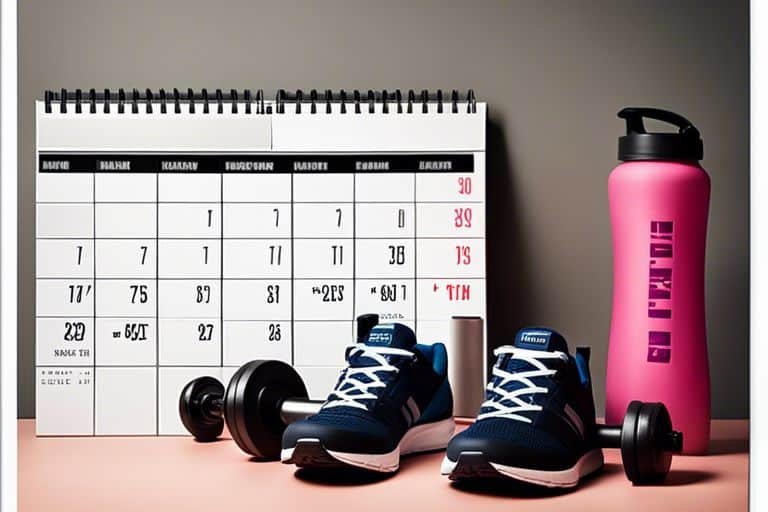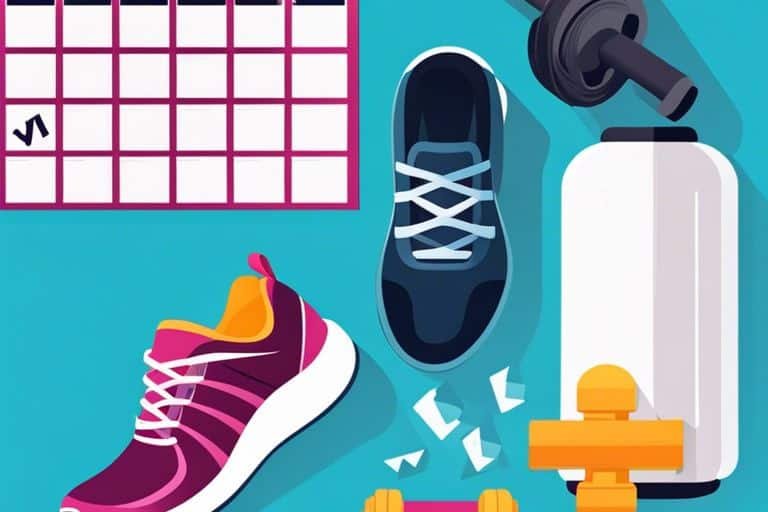Fitness enthusiasts know the importance of starting a new workout routine safely and effectively. This vital guide will provide you with all the tips and tricks you need to kickstart your fitness journey without risking injury or burnout. From setting realistic goals to choosing the right exercises, you’ll learn how to gradually build strength, endurance, and flexibility while prioritizing your overall health and well-being. Let’s get started on your path to a fitter, healthier you!
Key Takeaways:
- Consult with a healthcare professional: Prior to starting a new fitness regimen, it is crucial to consult with a healthcare professional to ensure that the chosen activities are safe and appropriate for your overall health and fitness level.
- Start slow and gradually increase intensity: It is important to ease into a new fitness routine to prevent injuries and allow your body to adjust. Begin with low-impact exercises and progressively increase the intensity and duration over time.
- Listen to your body: Pay attention to how your body feels during and after exercise. If you experience pain, dizziness, or any other concerning symptoms, stop the activity immediately and seek medical advice. Rest and recovery are also important for muscle growth and overall well-being.
Understanding Your Body
The first step in starting a new fitness regimen is understanding your body. This involves assessing your current fitness level, identifying your fitness goals, and knowing your physical limitations. By gaining a clear understanding of these factors, you can tailor your workout routine to suit your individual needs and capabilities.
Assessing Your Current Fitness Level
If you are new to exercise or have been inactive for a while, it is important to assess your current fitness level before starting a new regimen. This can help you determine where to begin and set realistic goals for your progress. You can assess your fitness level by evaluating your strength, flexibility, endurance, and cardiovascular health through simple tests or by consulting with a fitness professional.
Identifying Your Fitness Goals
Clearly defining your fitness goals is imperative for staying motivated and tracking your progress. Your goals may include losing weight, building muscle, improving cardiovascular health, increasing flexibility, or enhancing overall well-being. By setting specific, realistic, and measurable goals, you can create a roadmap for your fitness journey and stay on track towards achieving your desired results.
Current research suggests that setting small, achievable goals along the way can help maintain your motivation and momentum in reaching your larger fitness goals.
Knowing Your Physical Limitations
On your fitness journey, it is crucial to know your physical limitations and avoid pushing yourself beyond what your body can handle. This may involve considering any past injuries, medical conditions, or physical limitations that could impact your workout routine. By listening to your body, pacing yourself, and seeking guidance from healthcare professionals or fitness experts, you can ensure a safe and effective fitness regimen that works best for you.
Understanding and respecting your body’s limitations can help prevent injuries and setbacks, allowing you to progress steadily towards your fitness goals while maintaining optimal health and well-being.
Choosing the Right Workout Plan
Some individuals may feel overwhelmed when starting a new fitness regimen due to the vast amount of workout plans available. To ease this process and ensure long-term success, it is crucial to choose a suitable exercise routine that aligns with your fitness goals and lifestyle. Below are some tips to help you select the right workout plan:
Tips for Selecting a Suitable Exercise Routine
- Determine your fitness goals and objectives before selecting a workout plan.
- Consider your current fitness level and any medical conditions or injuries that may impact your exercise routine.
- Consult with a fitness professional or trainer to guide you in choosing the most appropriate workout plan for your individual needs.
Any new workout plan should be gradually introduced to allow your body to adapt and prevent injuries. Do not forget, consistency is key for long-term results!
Factors to Consider When Picking a Workout Plan
- Factors such as your schedule, availability of equipment, and workout preferences should influence your choice of a workout plan.
The factors to consider when picking a workout plan go beyond just your fitness goals. Factors such as your daily schedule, access to equipment, and preferred types of workouts should also play a significant role in your decision-making process. Knowing what works best for your lifestyle and interests can help you stay motivated and committed to your fitness routine.
- Knowing your body’s limitations and incorporating variety into your routine can help prevent burnout and injuries.
How to Create a Balanced Fitness Routine
Choosing a workout plan that incorporates a variety of exercises is vital for achieving a balanced fitness routine. This can include a mix of cardiovascular activities, strength training, flexibility exercises, and rest days. By diversifying your workout routine, you can target different muscle groups, prevent plateaus, and enhance overall fitness levels.
Workout plans should be tailored to your individual needs and preferences to ensure long-term adherence and success. Consulting with a fitness professional can help you create a personalized plan that meets your fitness goals while taking into account any limitations or considerations specific to your body.
Preparing for Your First Workout
What to Wear and What to Bring
With the right attire and equipment, you can set yourself up for a successful workout. Wear comfortable, breathable clothing that allows for full range of motion. Opt for supportive athletic shoes that are suitable for your chosen activity. Don’t forget to bring a water bottle to stay hydrated and a towel to wipe off sweat.
How to Warm Up and Cool Down
To prevent injury and improve performance, warming up and cooling down are crucial parts of any workout. Before your workout, start with dynamic stretches like arm circles and leg swings to loosen up your muscles and increase blood flow. After your workout, finish with static stretches to help improve flexibility and reduce muscle tension.
The warm-up and cool-down are just as important as the workout itself. They prepare your body for exercise and help it recover post-workout. Don’t skip these vital steps!
Tips for Staying Hydrated and Fueled
The key to a successful workout is proper hydration and fueling. Make sure to drink water before, during, and after your workout to stay hydrated. Consider having a light snack with a good balance of carbohydrates and protein about an hour before your workout to give you the energy you need.
- Hydrate with water throughout the day
- Choose healthy snacks like fruits, nuts, or yogurt
After your workout, replenish your body with a post-workout meal or snack that includes protein and carbohydrates to aid in muscle recovery and replenish energy stores.
Safety Precautions to Take
How to Prevent Common Injuries
There’s nothing more discouraging than getting injured right at the start of your fitness journey. To prevent common injuries such as strains, sprains, and muscle pulls, it’s imperative to warm up properly before any workout. Warm-up exercises increase blood flow to the muscles, making them more pliable and less prone to injury. Additionally, always use proper form and technique when performing exercises to avoid unnecessary strain on your muscles and joints.
Factors to Consider When Working Out with a Medical Condition
Factors such as age, overall health, and the specific medical condition you have should all be taken into consideration before starting a new fitness regimen. It’s important to consult with your healthcare provider to ensure that the exercises you choose are safe and appropriate for your condition. This will help prevent exacerbating any existing health issues and ensure that you can safely enjoy the benefits of exercise.
- Always inform your fitness instructor about your medical condition before starting a workout.
- Listen to your body and stop exercising immediately if you experience any pain or discomfort.
How to Listen to Your Body and Rest When Needed
Your body is your best indicator of when it’s time to take a break. Pushing through fatigue or pain can lead to overtraining and potential injury. Listen to your body’s signals, such as excessive soreness, persistent fatigue, or decreased performance, and give yourself the rest and recovery time needed. It’s imperative to incorporate rest days into your fitness routine to prevent burnout and allow your muscles to repair and grow stronger.

Building a Support System
After deciding to initiate on a new fitness regimen, one of the key factors that can contribute to your success is building a strong support system. Having people around you who motivate and encourage you can make a significant difference in staying consistent and achieving your fitness goals.
How to Find a Workout Buddy or Accountability Partner
An accountability partner or workout buddy can be instrumental in keeping you on track with your fitness goals. Look for someone who shares similar fitness objectives and is dedicated to their health journey. This person can offer motivation, support, and companionship during workouts, making the process more enjoyable and effective.
Tips for Hiring a Personal Trainer or Fitness Coach
Now, if you prefer professional guidance and personalized training, hiring a personal trainer or fitness coach could be the best option for you. Here are a few tips to consider when selecting the right trainer:
- Check their certifications and experience in the fitness industry.
- Discuss your fitness goals and ensure they align with their training approach.
- Ask for client testimonials or success stories to gauge their effectiveness.
Fitness professionals can provide expert advice, tailored workout plans, and constant support to help you reach your fitness milestones. The guidance and expertise they offer can optimize your workouts and ensure you stay safe while pushing your limits.
Joining a Fitness Community or Online Forum
You can also consider joining a fitness community or online forum to connect with like-minded individuals who share your passion for health and wellness. Being part of a community can offer a sense of belonging, motivation, and access to valuable resources such as workout tips, nutrition advice, and success stories.
Partner with others who can inspire and challenge you on your fitness journey, creating a supportive network that can propel you towards your goals.
Tracking Your Progress
How to Set Realistic Goals and Track Progress
Unlike what many people believe, setting realistic goals is crucial when starting a new fitness regimen. It’s necessary to set achievable milestones that keep you motivated and focused. Start by assessing your current fitness level and then determine what you want to achieve. Whether it’s weight loss, muscle gain, or improved endurance, make sure your goals are specific, measurable, and time-bound.
Factors to Consider When Choosing a Fitness Tracker or App
Some factors to consider when selecting a fitness tracker or app include the type of exercises you plan to do, the features you need (such as heart rate monitoring or GPS tracking), compatibility with your devices, and user-friendliness. Assess your budget and preferences to find the best option that will help you stay on track and motivated throughout your fitness journey.
- Consider the accuracy of the tracker or app in measuring your progress.
- Ensure the device or app aligns with your fitness goals and preferences.
Your fitness tracker or app can provide valuable insights into your workouts, progress, and overall health. This technology can help you monitor your heart rate, track calories burned, and analyze your sleep patterns. By reviewing this data regularly, you can make informed decisions to adjust your fitness routine for optimal results.
- This information can be necessary in identifying areas for improvement and celebrating your successes.
Tips for Staying Motivated and Avoiding Plateaus
Realistic goal setting and progress tracking go hand in hand with staying motivated and avoiding fitness plateaus. It’s important to mix up your workouts, set new challenges, and seek support from friends, family, or a personal trainer. By keeping your routine exciting and engaging, you can avoid burnout and maintain a consistent exercise regimen.
- Recognizing when you need a break and allowing for rest and recovery is necessary for long-term success.
With the abundance of fitness resources available, it’s easier than ever to find inspiration and stay motivated on your fitness journey. Consider joining a fitness community, following fitness influencers on social media, or participating in virtual fitness challenges. By surrounding yourself with positive influences and like-minded individuals, you can stay on track towards achieving your fitness goals.
- Recognizing the progress you’ve made, no matter how small, can help you stay motivated and committed to your fitness regimen.
Summing up
Upon reflecting on the imperative guide on how to safely start a new fitness regimen, it is evident that taking a gradual approach is key to preventing injury and burnout. By setting realistic goals, listening to your body, and seeking guidance from professionals, you can ensure a safe and effective start to your fitness journey.
Remember to prioritize proper nutrition, hydration, and rest, as well as incorporating a variety of exercises to prevent boredom and maintain motivation. With these tips in mind, you can initiate on your new fitness regimen with confidence and set yourself up for long-term success and well-being.
FAQ
Q: Why is it important to consult a doctor before starting a new fitness regimen?
A: It is important to consult a doctor before starting a new fitness regimen to ensure that you are physically fit to engage in physical activities. A doctor can help identify any underlying health conditions that may affect your ability to exercise safely.
Q: How can I set realistic goals when starting a new fitness regimen?
A: Setting realistic goals is crucial when starting a new fitness regimen. Start by defining clear and achievable objectives that align with your fitness level and lifestyle. Gradually increase the intensity and duration of your workouts to avoid injury and burnout.
Q: What are some tips for staying motivated during a new fitness regimen?
A: Staying motivated during a new fitness regimen can be challenging. Some tips to stay on track include finding a workout buddy for support, varying your routine to keep things interesting, tracking your progress, rewarding yourself for achieving milestones, and reminding yourself of the reasons why you started in the first place.







